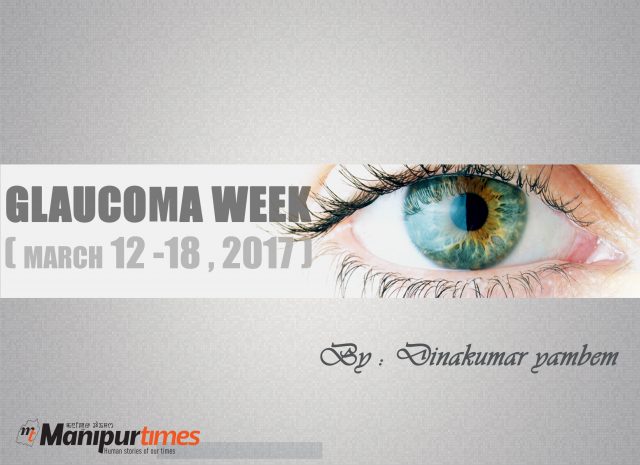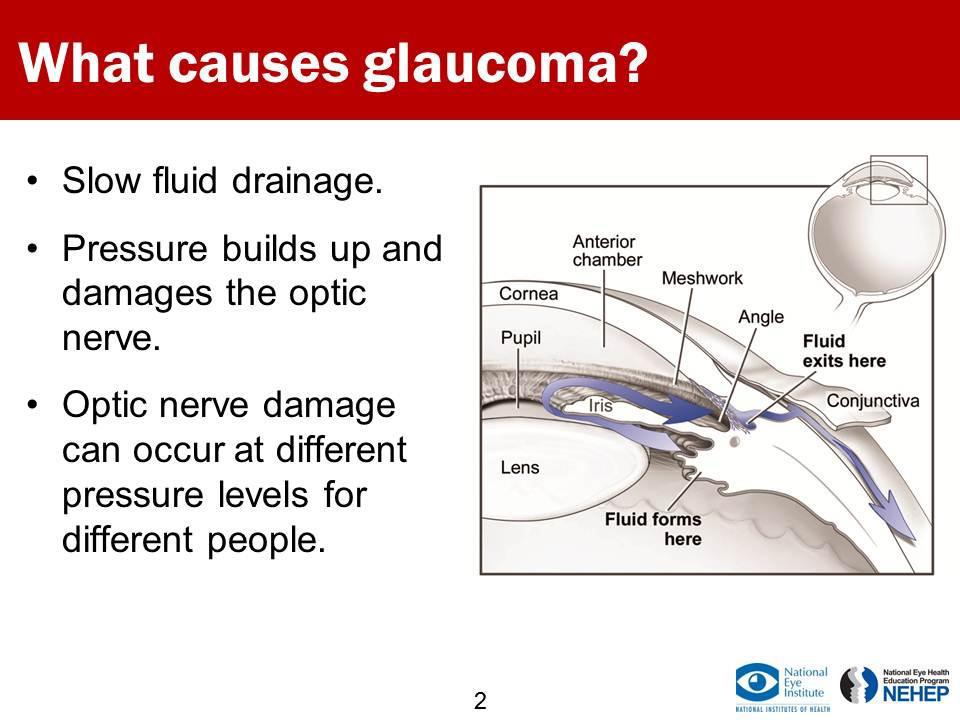World glaucoma week is a collaborative project between the World Glaucoma Association and the World Glaucoma Patient Association to eliminate glaucoma blindness by alerting people to have regular eye check – up, including examination of the optic nerve.
Glaucoma: An overview: The most fundamental fact about glaucoma is that it is not a single disease process. In fact, it is a group of eye diseases that damages the optic nerve – (the bundle of nerve fibres that carry information from the eye to the brain). This point is not commonly appreciated by the general public, which frequently leads to confusion. For example, a glaucomatous patient may have difficulty understanding why he/she has no symptoms while another patient experiences sudden pain and redness with a disease of the same name.
What causes glaucoma?
The illustration above shows how fluid flows in the eye. The blue arrows trace the fluid pathway.
- Clear fluid flows in and out of a small space at the front of the eye called the anterior chamber. This fluid bathes and nourishes nearby tissues.
- If the fluid drains too slowly, pressure builds up and damages the optic nerve. Though this build-up may lead to an increase in eye pressure, the effect of pressure on the optic nerve differs from person to person.
- Some people may get optic nerve damage at low pressure levels while others tolerate higher pressure levels.
- Controlling the pressure inside the eye is important.
- If left untreated, glaucoma can result in permanent vision loss or blindness
Implications of glaucoma: In India it is estimated that there are 11.2 million persons aged 40 years and older with glaucoma. It is the leading cause of irreversible blindness worldwide and is the third most common cause of blindness in India.
Types of glaucoma: There are two most common forms of glaucoma- primary open-angle and angle-closure. Other types include normal tension glaucoma, congenital glaucoma, pigmentary glaucoma etc. Both open-angle and angle-closure glaucoma can be classified as primary or secondary conditions. If the cause is unknown, it is referred to as primary glaucoma; if the cause is known, such as an eye injury, inflammation, lens induced or diabetes, it is referred to as secondary glaucoma.
Few of the risk factors for developing glaucoma: There are certain risk factors which increases the incidence of developing glaucoma such as age (more than 40 years), race (more common in African-American than Caucasians or Mongolians), family history of glaucoma (first degree relatives have 10 times increased risk) , refractive errors, migraine, diabetes etc.
Symptoms: Glaucoma is considered as a silent thief of sight. Many people with glaucoma have no idea they have the disease as it usually causes no symptoms (especially in open angle glaucoma), and the slow erosion of sight can go on for years without notice. This is so because the vision loss usually starts in the periphery. If left untreated, field of vision narrows and blindness may result.
However, few patients (those with angle closure glaucoma) may experience acute severe eye pain, nausea, blurred vision, eye redness and seeing a rainbow or halo around lights. This is considered a medical emergency because individuals can lose their sight in as little as one to two days without proper treatment.
How glaucoma is diagnosed? In order to diagnose the disease, the first and foremost thing is to-do a comprehensive eye examination. This includes measuring the eye pressure using a tonometer, testing the central and peripheral visions, measuring vision using an eye chart, examining the front and interior of the eye, measuring the corneal thickness and taking an image of the optic nerve.
Treatment: At present glaucoma as such is not curable. Any damage to optic nerve that has occurred before diagnosis is irreversible but it can very often be stabilized. So it’s a bit like having high blood pressure or high blood sugar. We can treat it, we can maintain it, and we can control the situation. But we can’t make it go away. That’s why early detection is critical.
While there is no cure for glaucoma, various treatments are available to control the eye pressure so as to preserve the remaining vision, including eye-drops, oral medications, laser therapy and/or surgery or a combination of these therapies.
Medications used for glaucoma can help reduce elevated eye pressure and prevent damage to the optic nerve. The treating physician will decide which medication is best and counsel the patient on the proper dose, administration and dosing intervals, as well as possible adverse effects of the medication. For eye – drops to be effective, one need to know how to properly administer them. It’s important to follow the prescribed therapy and take medications as directed. Patient should inform the doctor about allergies, other medical conditions and medications he/she is taking – including prescriptions, over the counter drugs, nutritional supplements or alternative or homeopathic products. This information is critical in preventing drug interactions. Some individuals may need surgery, however, especially if their prescribed medication is not sufficient or the adverse effects are intolerable.
To conclude, people confuse good vision with good vision health. Just because one can see well doesn’t mean that one’s eye may not be harbouring something, particularly when it comes to glaucoma – because he/she could be losing sight and not be aware of it. Most glaucoma cases can be effectively managed with early detection, proper treatment and routine eye exams.
Written by:
Dr. Dinakumar Yambem
DNB (Ophthalmology)
Fellow – Glaucoma (Shri Sankaradeva Nethralaya)
Consultant Ophthalmologist Shija Eye Care Foundation
E-mail: [email protected]














Nice project